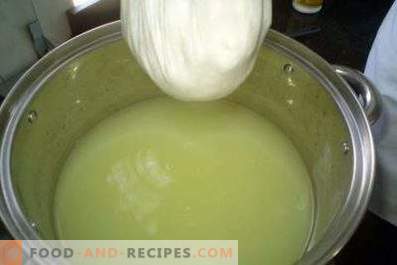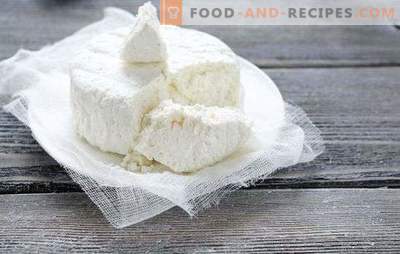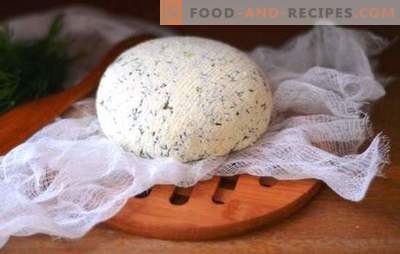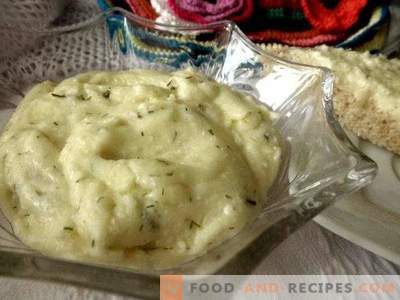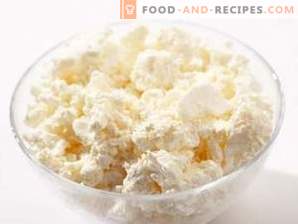
Cottage cheese from the market devoid of preservatives and various chemical additives, is a very useful dietary product. However, not everyone is at risk of buying it from their hands, because they are not sure about the quality of the milk from which it is made. As for the cottage cheese, in its taste and useful properties, it can not be compared with the home. Moreover, in our days, its use can bring the body much more harm than good. The solution in this situation is simple - you need to learn how to make cottage cheese yourself. Moreover, for this you do not need to have special equipment or possess special culinary skills.
Homemade cottage cheese recipe
In order to make cottage cheese at home, you will need 2-3 liters of milk. Ideally, it should be a market one, but if this is not possible, then you can buy it in the store. In this case, you should choose milk with the maximum percentage of fat content - in this case, the cottage cheese will not be dry. Milk should be poured into a glass jar, cover it with a clean piece of gauze or cotton fabric and put in a warm place to ferment. This process can take several days, however, as a rule, already on the second day the raw material for cottage cheese, and simply sour milk, is ready. This can be determined by exfoliating the whey, which, as a clear yellowish liquid, sinks to the bottom of the jar while sour milk rises. At the same time, it is not necessary to add lemon juice or vinegar to milk in order to reproach this process, since all extraneous components will negatively affect the taste characteristics of the curd. When sour milk is ready, you need to pour it into a small saucepan and mix it well. After that you should take a larger pot into which some water is poured. It should install dishes with yogurt and put this simple device on the stove. The result will be a steam bath on which to cook homemade curd. Some prefer not to complicate their lives and bring sour milk to a boil in one pan. However, in this case, it is very likely that the curd pellets will stick to the walls of the dishes and burn. Therefore, it is better not to take risks and cook cottage cheese on the steam bath.
The fire on the stove should be minimal, and when heated, yogurt should be constantly stirring. As the water boils in a large saucepan, the small process of peeling off the whey will begin in a small saucepan. At the same time, yellowish flakes will float on its surface - the future curd mass. Once this has happened, remove the small saucepan from the stove, cover it with a lid and cool in any container filled with water. It should be borne in mind that if you do it prematurely, the whey will not have time to properly separate from the curd, and it will turn sour. In turn, if overexposed sour milk is on fire, the cottage cheese will turn out to be “rubber” and very unpleasant in taste. The next step is to gently strain the resulting mass and remove the serum from it. For these purposes, a sieve is ideal, at the bottom of which you should lay a piece of gauze, folded in several layers. It should be large enough so that later it can be tied. Now you need a tablespoon to put on the gauze white flakes from the pan and wait about half an hour until the serum is completely drained. After that, it remains only to tie the gauze, slightly squeeze the resulting mass, and then lay it out with any dishes. Cottage cheese should turn out very gentle and crumbly, with a pleasant sweetish taste. Those who love thick curd, you can compress it. To do this, the resulting mass should not be immediately laid out in a dish, you need to put it together with gauze in a saucepan, put a wooden cutting board on top, on which any weight is put, and send the curd in the refrigerator. He will be ready in a few hours.

